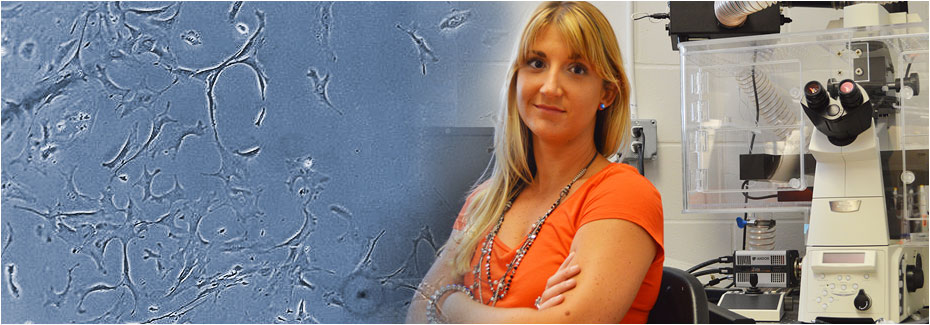In 2012, a team from the University of Florida led by biology professor Malcolm Maden discovered that the African spiny mouse has the natural ability to heal from wounds without scarring, making it the first ever mammal identified as being regenerative. Across campus, this discovery – and Maden’s data – intrigued Chelsey Simmons.
An assistant professor in UF’s Department of Mechanical & Aerospace Engineering and affiliate faculty in the J. Crayton Pruitt Family Department of Biomedical Engineering, with a courtesy appointment to the UF College of Medicine, Simmons looked to the African spiny mouse and wondered just what exactly was going on in its cells. Were the mice programmed to respond to injury differently, or were they receiving different physical signals?
She and Maden drafted a research proposal to answer this question. If Simmons could study the African spiny mouse in her lab, they suspected she could help crack the code to scar-free healing. Last month they officially got the green light with a National Science Foundation award.
Simmons’ GatorBAIT lab is named for the Biomimetic Actuators & Integrated Technologies (BAIT) that she and her team use to replicate organ systems in vitro. Working in these environments, they have already proven that stem cells can help restore normal mechanics to the heart after a heart attack. By focusing on replicating the natural mechanical environment of skin and wounds, Simmons’ team will provide controlled mechanical stimulations of spiny mouse cells and observe what happens to them under stress and strain.
In doing so, her team suspects they will better understand fibrosis and possibly be the first to identify the role that mechanical stimuli play on cell regeneration.
“At this stage of research, we’re trying to control the environment of the cells, in ways that we can’t in the body, to see if we can get the cells of a normal mouse to regenerate like the cells of an African spiny mouse,” Simmons said. “If we can figure this out – and I think we can – we’ll have new clues to pursue for scar-free healing in humans.”
Simmons received her B.S. cum laude from Harvard University in engineering sciences, her M.S. and Ph.D. from Stanford University in mechanical engineering, and a Ph.D. minor in education from Stanford. She was a founding officer and president of Stanford’s American Society for Engineering Education. She was recruited to the University of Florida in 2013.
Read more about the award, “Strain-Mediated Activation of Skin Regeneration and Fibrosis.”
